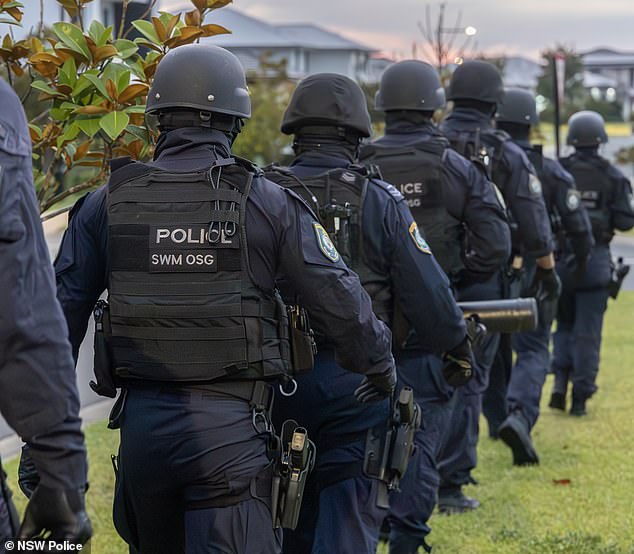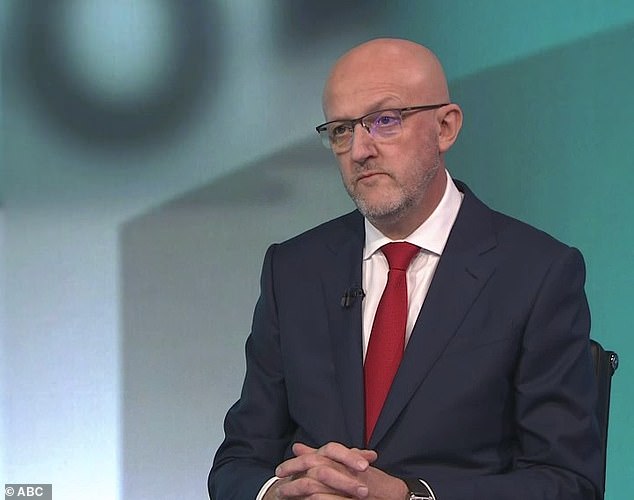Australia’s spy chief has expressed concern about the number of young people being recruited by extremists and the rapid pace at which residents are becoming radicalised.
ASIO chief Mike Burgess said it had become a concern for his department after the country’s terror threat level was raised from possible to probable on Monday.
It was the first time the level had been raised since the peak of threats launched by the Islamic State in 2014.
Security officials have investigated eight incidents for possible terrorist links in Australia over the past four months.
Mr Burgess warned there was a 50 per cent chance of an attack on Australian soil next year.
The director general said the environment today is “completely different” than when the threat level was raised a decade ago.
“More and more people are becoming radicalized more quickly and more and more people are thinking that violence is permissible because of a variety of grievances and ideologies, not just what we saw in 2014,” he said. 7.30 from ABC Monday night program.
He added that of the eight incidents of possible terrorism, five of them involved people between the ages of 14 and 21, and more than half were religiously motivated.
Of greatest concern was that only two of the incidents involved people known to ASIO or the police.
Australia’s spy chief (pictured, ASIO chief Mike Burgess) has revealed the level of terror threat has risen as more young people become more radicalised and turn to violence.
“The other eight include an equal mix of religious, nationalist, racist and, in one case, a mixed ideology ranging from both left and right,” Burgess said.
‘All but two were unknown to us and the police.
‘This is what is new: people resort to violence without warning and without us knowing, with little or no planning in some of these cases.’
While the Middle East conflict is understood to have exacerbated security agencies’ concerns about politically motivated violence in Australia, it is not the direct cause of the increased threat level.
Mr Burgess said young people were “particularly vulnerable” through social media, which can exacerbate a person’s feeling of isolation.
“The Internet is a great thing, but it allows people to access something and get it in a matter of days, not months or years,” he said.
“This is particularly worrying.”
The ASIO chief said it was important for parents to know what their children were doing when it came to their online activity.
He said that during the Covid lockdowns, half of his priority counter-terrorism cases involved minors.
“Locked in their rooms with their devices, they could quickly fall into a hole of hate, unmoderated in the schoolyard or in community groups or in the positive benefits of family outings,” she said.
“Covid-19 is no longer with us, but it is still a problem. It is worrying how quickly social media can catch people. The internet can catch people quickly and damage young brains that are not yet fully formed.”
Mr Burgess said groups considered threats included neo-Nazis.
Among those neo-Nazis are “accelerationists,” whom Burgess described as those who believe in white supremacy and “don’t like the way the world is run today.”

The threat level was raised from possible to probable on Monday, marking the first time it has been lifted since the peak of threats made by the Islamic State in 2014 (file image)
“They want a fall so that things can return to what they believe is the correct order,” he said.
Premier Anthony Albanese said the national security committee met on Monday morning to discuss the change in threat level.
“Likely does not mean inevitable and it does not mean there is information about an imminent threat or danger,” Albanese told reporters in Canberra.
“But the advice we’ve received is that more Australians are embracing a more diverse range of extreme ideologies.”
The prime minister said it was “our responsibility to be vigilant” but sought to reassure Australians by reiterating that the same threat level had been in place for more than eight years before it was lowered in November 2022.
Mr Burgess has previously said that politically motivated violence now ranks alongside espionage and foreign interference as major security concerns.
He added that anti-authoritarian beliefs were also growing along with a decline in trust in democratic institutions.
“This trend increased during the Covid pandemic, gained further momentum after the terror attacks in Israel and accelerated during Israel’s military response,” he said.
‘The conflict (in the Middle East) has fueled grievances, fueled protests, exacerbated division, undermined social cohesion and heightened intolerance.’
Lone actors were also the most likely style of terrorist attack, often using rudimentary weapons in a crowded or public place.

